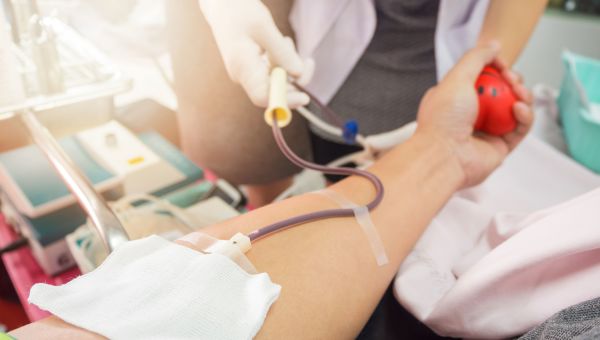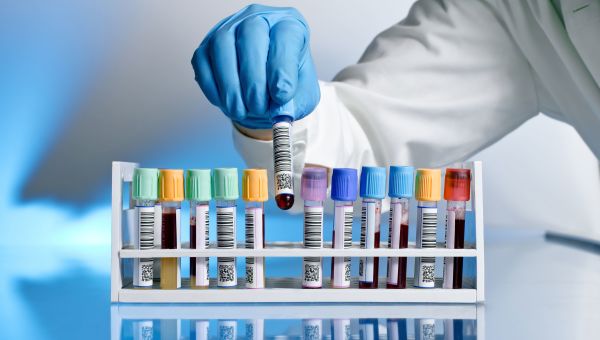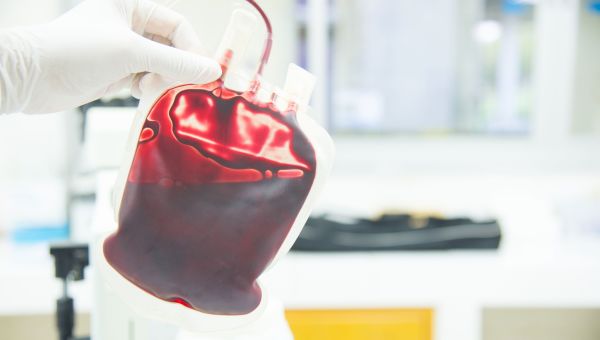5 key reasons to donate blood
By the time you finish reading this sentence, someone in the U.S. will need blood. Here's how to help.
Updated on December 13, 2024

Donating blood is often referred to as giving the gift of life—and for good reason. Every two seconds someone in the United States needs blood, according to the American Red Cross. And just one unit of donated blood can save up to three lives.
Yet every year, less than 3 percent of people eligible to donate blood do so. There are many reasons a person might not donate, among them a fear of needles, a busy schedule, or perhaps they don’t realize how badly blood is needed. The need is partly because donations have a limited period within which they can be used, meaning there is a constant demand for more.
With that in mind, here are some excellent reasons you should consider donating blood today.

What to expect from the blood donation process
One reason people forgo blood donations is they don’t have a lot of time. But from start to finish, the entire process can be completed in about an hour. The actual blood donation part takes about 10 minutes.
Keep in mind, if you are donating platelets, red cells, or plasma by apheresis (a medical tool which separates out blood components), it can take longer—up to about two hours. But with smartphone apps like Blood Donor from the American Red Cross, you can manage your blood donation, and even speed up the process using its RapidPass feature.
The fine print: To donate blood you must be in good overall health, at least 16 years old in most states, and weigh at least 110 pounds. Still not sure if you can donate? Check out the American Red Cross’ eligibility requirements.
Here’s what you can expect if you donate blood with the American Red Cross. Be sure to:
- Get plenty of rest the night before you donate.
- Hydrate, and drink an extra 16 ounces of water earlier that day.
- Eat a light meal before you donate and avoid fatty foods.
Once you get to the donation site, you’ll be evaluated to determine your eligibility for giving blood. Then, the onsite staff will typically do a mini-physical and take a small blood sample to check your hemoglobin levels. They’ll also check your temperature, pulse, and blood pressure. You’ll answer questions about your health history and places you’ve traveled in the months prior.
During the donation, the doctors will draw blood with a brand-new, sterilized needle. They’ll collect one unit of blood and then place a bandage over the needle prick. You can usually leave 10 to 15 minutes later.
After giving blood, the American Red Cross suggests you drink an extra four glasses of liquid (except alcohol), skip alcoholic drinks for 24 hours, and avoid heavy lifting or exercise. Stop what you’re doing if you become dizzy or lightheaded. If the problem persists, contact your healthcare provider (HCP). If your blood test comes back positive for something like HIV, the blood will be discarded, and you’ll be alerted.

One blood donation can benefit multiple people
One unit of blood can save up to three lives because your blood has a unique makeup. In fact, up to four of your blood’s components can be separated out and used for multiple people. This is referred to as blood component therapy.
Here’s a breakdown of your blood’s components:
- Whole blood: Consists of red blood cells and platelets. It’s commonly needed during surgeries and traumas. It’s the most common type of blood donation.
- Red cells: Carry oxygen from your lungs back to your body’s tissue. This donation type helps during surgeries and traumas, as well as for blood disorders such as anemia.
- Platelets: Forms clots to help stop or prevent bleeding. They are essential during surgeries, organ transplants, cancer treatments, and traumatic injuries.
- Plasma: Mostly made up of water and some essential proteins. It's critical to helping burn patients and people with bleeding disorders.
- Cryoprecipitated AHF: A portion of plasma rich in clotting factors. Especially useful for rare clotting genetic disorders such as hemophilia.
- White blood cells (leukocytes) and granulocytes: Helpful to the immune system. One type, called granulocytes, can help treat infections that don’t improve with antibiotics.
In blood component therapy, your red cells may go to one person, your platelets could go to another, and the plasma could go to a third. So, donating just one unit of blood can help treat multiple conditions and traumas.

Your stored blood doesn’t last very long
The shelf life of a blood donation is relatively short. Red blood cells last just 42 days when refrigerated. Plasma and cryoprecipitated AHF can last up to a year if frozen. Platelets only last at room temperature for up to five days. They’re difficult to store and must be constantly agitated (moved around) to prevent clotting. Once they start clotting, they can no longer be used.
That means new blood donations are always in demand, especially during crisis situations. In fact, every 15 seconds someone in the U.S. needs platelets.

Your blood donation can help future you
When you donate blood so you can use it during surgery or a medical procedure, it’s called an autologous donation. Since it’s your own blood, it’s generally thought of as the safest form of blood transfusion. There’s a small risk of anemia, or low red blood cells, with autologous donation. Your HCP may ask you to prepare ahead of time by taking iron tablets, folic acid, or vitamin C.
An autologous donation can only be done with a prescription, and you may have to donate multiple times in case you need more than one unit of blood during surgery. Make sure you talk to an HCP about when and how often you should donate. At the American Red Cross, you can donate every four to seven days, and can start as early as six weeks before a surgery. Many HCPs prefer their patients stop donating within seven days of the surgery.

Your blood can help a trauma victim
There are eight different blood types. Each type differs because of the presence or absence of antigens. An antigen is any type of unrecognized substance which triggers the immune system. The membrane of red blood cells already contains millions of antigens, which the body does not attack because they are self-made.
Blood transfusions rely heavily on correctly matched blood. If it’s not matched, the body will assume it’s a foreign antigen and try to fight it off.
The different blood types include:
- Group A: This group can donate blood to people with type A and AB.
- Group B: This group can donate blood to people with type B and AB.
- Group AB: This group can donate to other people with type AB and receive from everyone.
- Group O: This group is the universal blood type, meaning someone with this blood type can donate blood to anyone. Type O negative blood is highly valuable in an emergency.
- Rhesus factor (positive or negative): A hereditary protein found on the covering of red blood cells. If your blood has the protein then you are Rh positive, if not, you are Rh negative. It’s valuable to know if you’re Rh negative, because it may cause risks in pregnancy.
If you don’t know your blood type, find out. One way to learn is by donating. Once you know, share it with your HCP. If you’re involved in a traumatic event, emergency providers will be able to help you more quickly.

Your body replaces its own blood supply
Don’t skip blood donation because you’re worried about having less blood in your own body. The typical person has 10 units of blood and you only lose 1 unit during a normal blood donation. What’s more, your body replaces the lost blood supply on its own. Within 24 hours, your body replaces plasma. And within four to six weeks, your body replaces red blood cells. That’s why you need to wait at least eight weeks between whole blood donations unless the donation is prescribed by your HCP, as with autologous donations.
If you’re on the fence about giving blood, remember that a single person involved in a car accident may require up to 100 units of red blood cells. If you donate the typical amount (one unit, or 450 to 500ml), you could help save that life. Plus, it could be you on the receiving end one day.

American Red Cross. Importance of Blood Supply. Page accessed October 25, 2024.
Mayo Clinic. Blood Donation. Page last updated November 30, 2023.
American Red Cross. Blood Donor App. Page accessed October 25, 2024.
American Red Cross. Before Your Donation. Page accessed October 25, 2024.
American Red Cross. The Blood Donation Process. Page accessed October 25, 2024.
American Red Cross. How can one donation help multiple people? Page accessed October 25, 2024.
American Red Cross. What Happens to Donated Blood. Page accessed October 25, 2024.
American Red Cross. Platelet Donation. Page accessed October 25, 2024.
American Red Cross. Autologous and Directed Donations. Page accessed October 25, 2024.
MedlinePlus. Blood donation before surgery. Page last reviewed August 12, 2023.
American Red Cross. Facts About Blood and Blood Types. Page accessed October 25, 2024.
Cleveland Clinic. Rh Factor. Page last reviewed November 10, 2022.
American Red Cross. What is Your Blood Type. Page accessed October 25, 2024.
American Red Cross. Whole Blood and What It Contains. Page accessed October 25, 2024.
American Red Cross. Types of Blood Donations. Page accessed October 25, 2024.
Sara Martinez. How Much Blood Is Taken When You Donate? OneBlood. September 5, 2024.
Massachusetts General Hospital. Frequently Asked Questions About Donating Blood. Page accessed October 25, 2024.
More On


video


video


video


video
